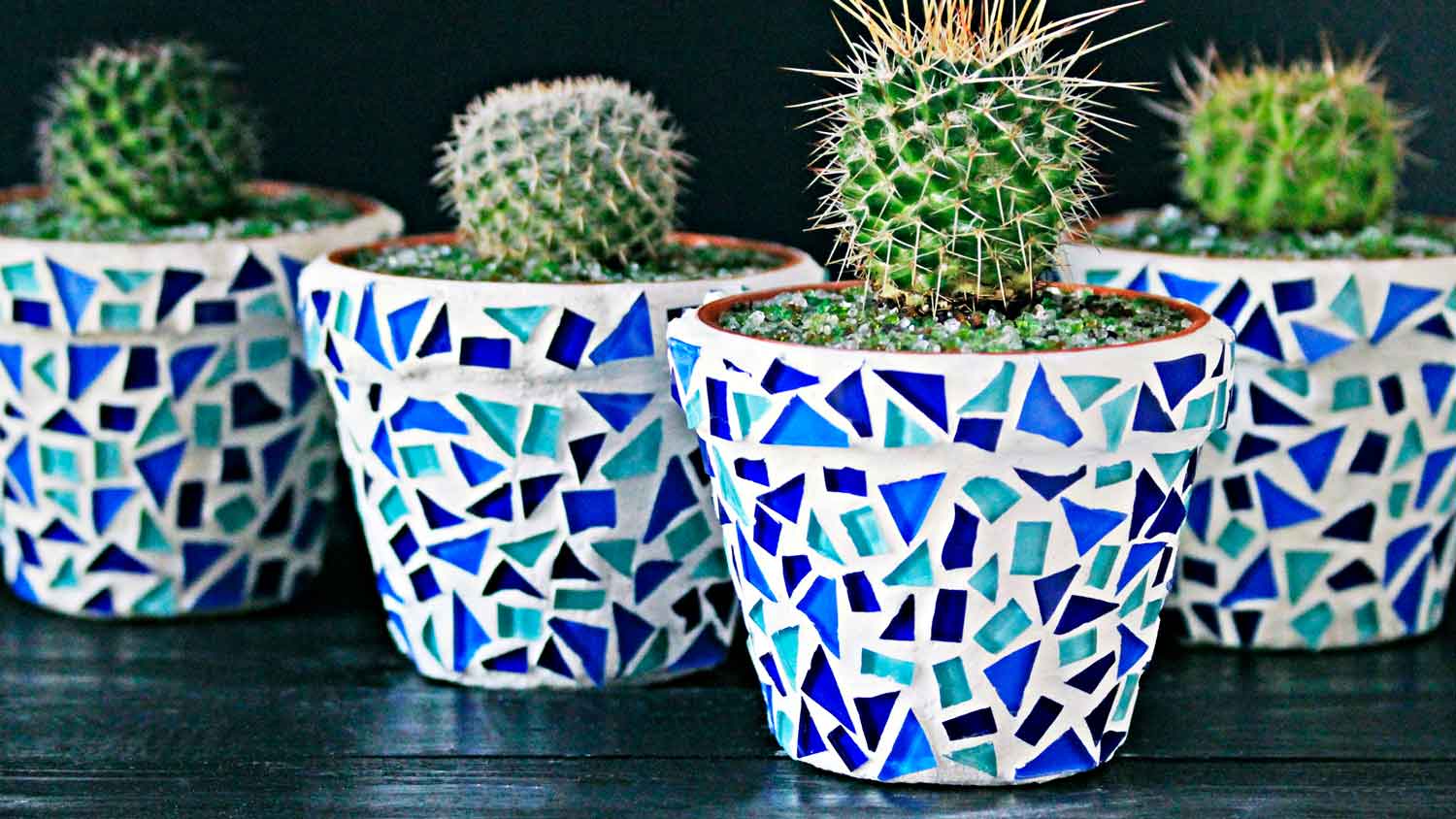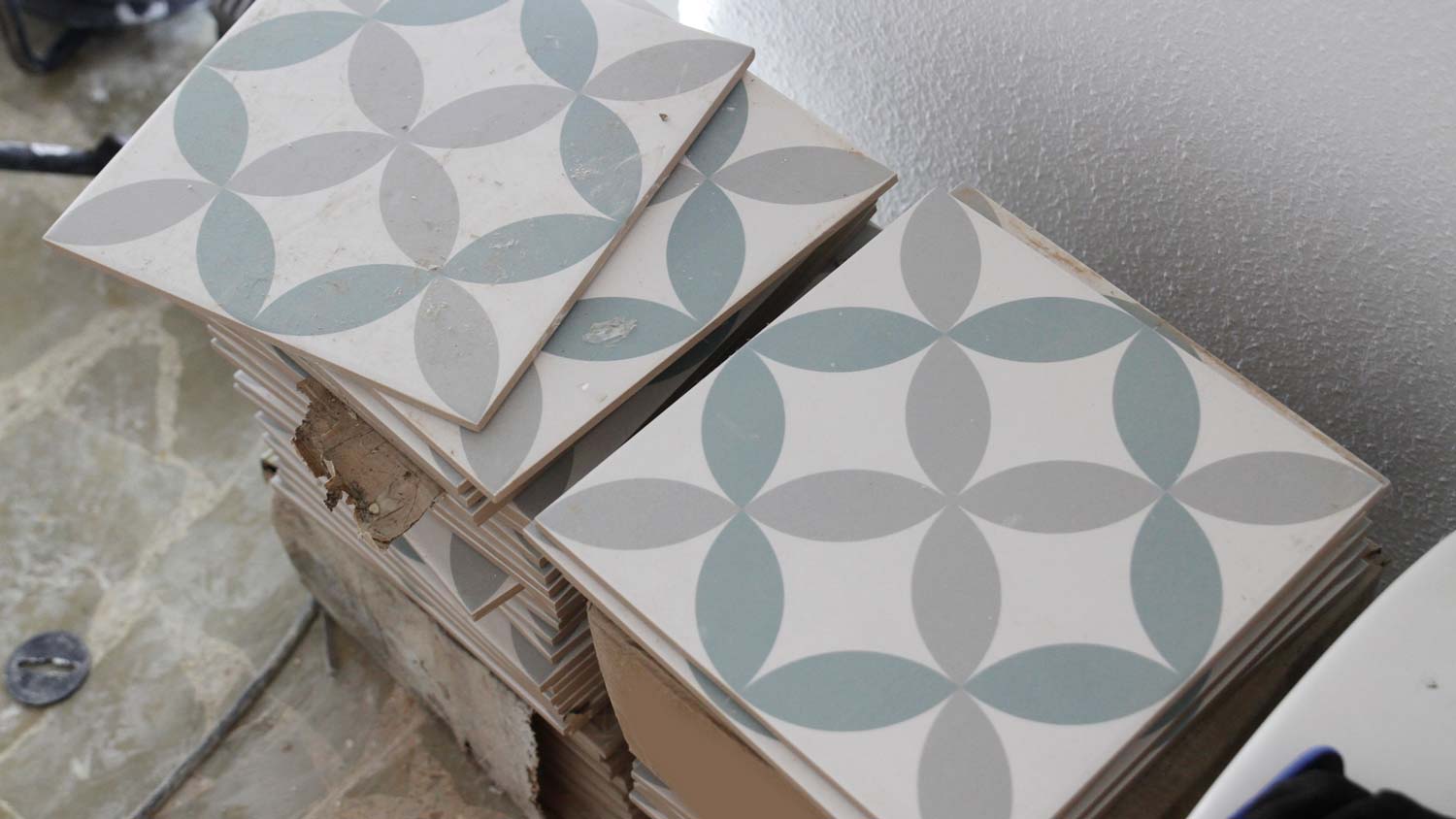How to Dispose of Tile Properly
Don’t trash this potential treasure


Ripping up old tile and getting new flooring is one of the most exciting updates you can plan in your home, but this often comes with a small hiccup—what do you do with all the tiles and ceramic shards now? Your first inclination may be to throw them in your trash bin along with all your other household garbage, but depending on where you live, it may not be accepted by your local waste management company. Plus, throwing out old tiles only adds to landfills, where they take hundreds of years to break down.
In this guide, we’ll explain some options you have for how to dispose of tile, including more sustainable disposal methods that can help keep the environment clean.
Why Dispose of Tile Properly?
Tile takes around 1,000 years to break down in a landfill. It’s better to recycle or reuse it. Landfills are filling up with debris that takes decades to decompose, so reducing how much waste continues to go to the landfill is a good way to do your part for sustainability.
Tile is recyclable in many areas. Proper disposal facilities have machines that can grind down ceramic for use in manufacturing other products.
How to Dispose of Tile 6 Ways
There are six primary ways to dispose of tile. The one that’s right for you will depend on your location and how much tile you need to get rid of.
Sell
If your tiles are in good or great condition (meaning, no chips, broken pieces, or scratches), consider selling them through a local marketplace. This is often only an option if you have leftover tile from a home renovation project that you’re unable to return, which means it’s brand new and still in the box.
The more you have, the more likely this is to be your best option, as other people will need larger quantities to be able to complete their projects with a single style and color.
By selling your tiles in good condition, you can make a little extra money, clear out something old from your house, and give new life to the tiles, keeping them out of landfills for years to come.
Upcycle

Upcycling is another word for repurposing materials, and tiles have a lot of potential for transformation. If you can’t sell them due to less-than-perfect condition after removal, consider using the tiles elsewhere in your home or using them to create a gift to extend their life beyond your bathroom floor. This is where you put on your creative hat and look around for inspiration, but a few ideas worth considering include the following:
Set of coasters
Tiled kitchen table
Tiled plant stand
Planter
Serving tray
Tile magnets
Covered patio tile
Recycle
Perhaps you don’t feel like putting together a craft, or your tile isn’t in the best shape for selling. If that’s the case, consider recycling it instead. Unfortunately, most waste management companies do not allow piles of tiles simply placed in your weekly curbside pickup bin. However, you can call the local company or municipality handling your recycling and ask about their policy regarding porcelain and ceramics.
Some areas simply won’t have a recycling center for tiles. Tile is more challenging to recycle than glass because it’s harder to grind down and repurpose. If you do have a recycling facility that accepts tile nearby, you can either load your tiles into your car or a rental truck and deliver them, often at no cost.
Donate
Another option to dispose of tile is donating it. If it’s in good condition and you feel like someone else could get use out of it, but you didn’t get any bites on your local online marketplace donating can be a great way to go. Consider calling local non-profits specializing in renovating or building homes, houses of worship, or even schools and see if there’s a need for materials.
You can also contact local charity organizations to see if they’ll accept tile donations. Habitat for Humanity’s ReStore program is a good option that might be available in your area.
Once you find a place willing to accept, stack the tiles as neatly as possible and ask about the best delivery method or if they’re willing to pick them up. Even if you can’t find an organization in need of them, remember you can always donate to your friends or family members who may eventually take on a home project that involves tile.
Store Your Tiles

Sometimes, the best idea is to hang onto your tiles and store them for use at another time. Given their durability and stackability, you can likely find a spot in your home for them that’ll keep them damage-free and out of the way. Of course, this is often only feasible if you have a small number of excess tiles. This method works particularly well for anyone who does a lot of DIY home renovations, wants spare materials on hand for potential repairs, or just might consider getting crafty one of these days. One piece of advice, though—just like with excess laminate flooring, keep the tiles covered to prevent scratches or cracks.
Arrange for Pickup or Rent a Dumpster
Lastly, if none of these other options work for your particular needs—like if the tiles you’ve ripped up are far beyond use—you can reach out to a local junk removal company and have them take the tile away for you. Ask around to find a company that will dispose of tile in an eco-friendly way if you’re concerned about your stuff ending up in a landfill.
While this method does cost more—typically, junk removal costs anywhere from $60 to $600—it’s a convenient option for a job done the right way and with minimal effort on your part. Professionals will come to your home, load the tile themselves, and haul it away for you, saving you time and effort. And since tile is heavy, this option could save you from injury, too.
Similarly, dumpster rentals offer another solution, but you’ll have to toss the tiles in the bin yourself. Dumpster rental costs about $100 to $300 per week, but it’s a great alternative if you have other materials in your home that need proper disposal. You can contact your dumpster company to see if they can recycle what you place inside, but most will bring your waste to a landfill, so it’s a less eco-friendly option than hiring a junk hauler in most cases.
Tips for Handling Tile Disposal
Disposing of tile can be a labor- and time-intensive job, so there are a few tips that can save you time, keep disposal costs down, and keep you safe in the process.
Leave the heavy lifting to professionals. If possible, let professionals handle the heavy lifting. Hiring a junk removal company will cost you more, but you could save yourself from potential injuries and save hours of your time by relying on a pro.
Ask your flooring professional if they can include tile removal. If you’re ripping up tile in your home, chances are you’re having a professional lay down new flooring in its place. If that’s the case, ask your flooring installation company if they can include ripping up the old floor and hauling it away in their estimate. You’ll save some money on labor by avoiding an additional trip fee.
Wear proper safety equipment. If you do rip up and haul away your tile yourself, make sure you wear the required safety equipment. Put on a dust mask to avoid breathing in any airborne particles, wear safety goggles to protect your eyes, and wear cut-resistant gloves to stay safe when handling shards of tile or sharp edges.
Don’t get rid of all your tile. If you’re disposing of extra tile after a home renovation project, always keep a box or two of each style and color you used in storage. If your installed tile ever cracks or chips in the future, having extras on hand can mean a quick and easy repair, especially if your manufacturer discontinues the products you installed originally.
Recycle whenever possible. No matter what method you use to dispose of tile, try to make sure the material is recycled rather than sent to a landfill. This is a more sustainable option and can keep waste that takes hundreds of years to decompose out of landfills.
DIY vs. Hiring a Pro to Dispose of Tile
When it comes to projects you can DIY, junk disposal is one of the easiest to tackle yourself. You can save an average of $100 to $300 on labor fees if you’re able to haul away your tile yourself over hiring a junk removal company, and those savings could climb much higher if you have a large amount to get rid of.
However, tile is a heavy material and can be dangerous to handle, especially if any of the tiles are broken. Hiring a pro is an easy way to avoid injury, and it can save hours of your time, as well. Plus, you can speak with professionals before hiring to ensure you choose one that will recycle your tiles or bring them to a recycling facility rather than just dumping them in a landfill.
If you have a small amount of tile, a DIY disposal job with proper safety precautions should be doable, but for large amounts of tile, hiring a professional is probably well worth the money.
Frequently Asked Questions
If you’re handling your tile removal yourself, seal the room using painter’s tape and heavy-duty contractor bags to prevent dust and shards from escaping. Use a claw hammer or a pry bar and a mallet to get behind the tile and pry it away from the floor or wall. Once your tiles are all removed, sweep everything into contractor bags for disposal, being careful not to overfill them. Make sure you wear a dust mask, safety goggles, and work gloves to keep yourself safe from injury while you work.
Tiles last for around 100 years or more. Tiles on backsplashes can last even longer since they’re less likely to crack under foot traffic or from accidental drops, but even tile in high-traffic flooring can last a century or more with proper installation and upkeep. Porcelain tiles are denser and stronger than standard ceramic tiles, so they’ll last longer, often pushing past the 100-year mark.
Yes, it’s always a good idea to keep a box or two of spare tiles after a home renovation project. Tiles can crack from improper installation, heavy foot traffic, and impact from drops. Having some extra tile on hand can make replacement fast, easy, and affordable. Plus, some manufacturers might discontinue particular colors or styles, and slight variations in tile colors between batches could mean mismatched tiles even if your product isn’t discontinued. Having a few spare tiles in storage can help avoid these issues, as well.





- Ceramic Tile Flooring Pros and Cons: Could This Be the Tile of Your Dreams?
- Standard Tile Sizes: Find the Best One for Your Tile Installation Project
- What Is the Best Tile for a Kitchen Floor?
- The Pros and Cons of Tile Roofs
- What Is the Best Tile for Bathroom Floors?
- 8 Smart Ways to Update Your Bathroom Tile Without Replacing It
- Should You Install a Tile Floor Before or After Cabinets?
- How Long Does Tile Flooring Last?
- How to Cut Glass Tile Safely and Without Shatter
- 10 Helpful Tips for Shower Tile Installation










